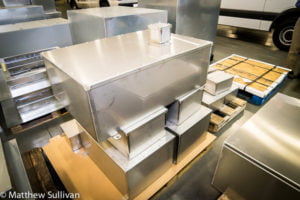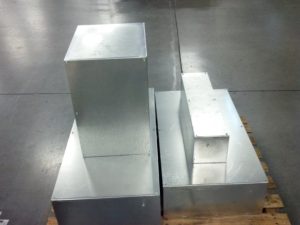About:
 Every electrical system has points where two or more wire networks connect or intersect. The electrical junction box lies at the heart of such an intersection and is designed to provide critical two-fold protection to the encased junction point – which may include wiring as well as other electrical components – as well as personnel working close to such a hazardous spot. Typically, junction boxes are installed at the point where the electrical wires from the main grid are connected to the wiring system of a house, building or factory.
Every electrical system has points where two or more wire networks connect or intersect. The electrical junction box lies at the heart of such an intersection and is designed to provide critical two-fold protection to the encased junction point – which may include wiring as well as other electrical components – as well as personnel working close to such a hazardous spot. Typically, junction boxes are installed at the point where the electrical wires from the main grid are connected to the wiring system of a house, building or factory.
Types & Ratings:
Electrical junction boxes come in a wide variety of shapes and constituent materials. Shapes can be as varied as a square, rectangular, round or even octagonal. These can be embedded within the wall or can be jutting out as well. In some instances, junction boxes are used in conjunction with wire ways which are used to protect the wiring entering the junction box from the elements.
 Constituent materials for junction boxes include custom metals including mild steel, stainless steel and aluminium – metal casing has the advantage of providing higher flame resistance as well as protection over a wider range of temperatures. Stainless Steel (NEMA 4X) gives a junction box a greater degree of corrosion resistance.
Constituent materials for junction boxes include custom metals including mild steel, stainless steel and aluminium – metal casing has the advantage of providing higher flame resistance as well as protection over a wider range of temperatures. Stainless Steel (NEMA 4X) gives a junction box a greater degree of corrosion resistance.
A terminal, within a junction box, is the metallic platform on which the wiring system is connected. The box can contain different types of terminals. The most common terminals include the busbar terminal which consolidates or connects multiple circuits and the single screw terminals which direct all the wires to a single connecting point.
 Two standard setting bodies, Underwriters Laboratories (UL) and National Electrical Manufacturers Association (NEMA) have set standards to determine the degree of environmental conditions that electrical enclosures, in general, and electrical junction boxes, in particular, can withstand. These ratings dictate whether a particular junction box can be used indoors or outdoors and / or it can used at hazardous or non-hazardous spots. While NEMA Type 1 is the rating for boxes used indoors and for protection from dust, NEMA Type 3 and above are the ones that can be used outdoors and provide protection from dust, water (including rain, snow and sleet) as well as oil. Depending on the level of protection required the boxes can be custom finished to provide the required level of protection and to make it fit seamlessly into its surroundings.
Two standard setting bodies, Underwriters Laboratories (UL) and National Electrical Manufacturers Association (NEMA) have set standards to determine the degree of environmental conditions that electrical enclosures, in general, and electrical junction boxes, in particular, can withstand. These ratings dictate whether a particular junction box can be used indoors or outdoors and / or it can used at hazardous or non-hazardous spots. While NEMA Type 1 is the rating for boxes used indoors and for protection from dust, NEMA Type 3 and above are the ones that can be used outdoors and provide protection from dust, water (including rain, snow and sleet) as well as oil. Depending on the level of protection required the boxes can be custom finished to provide the required level of protection and to make it fit seamlessly into its surroundings.
Click the Link for more information about NEMA & UL classifications.